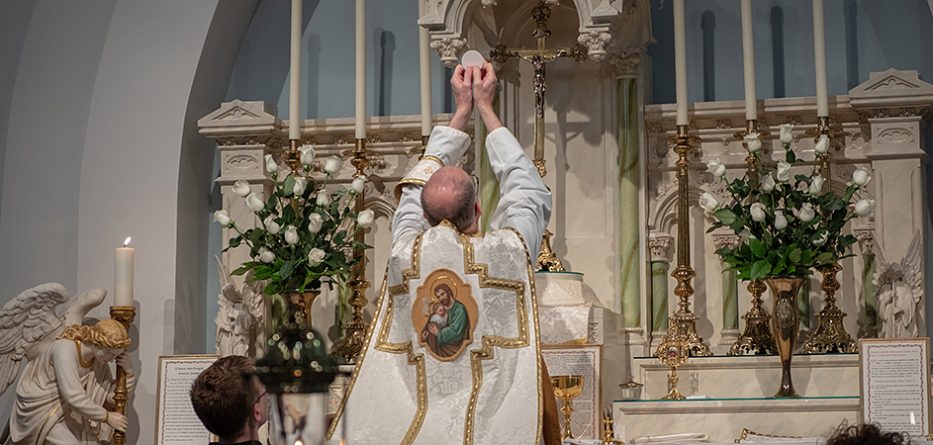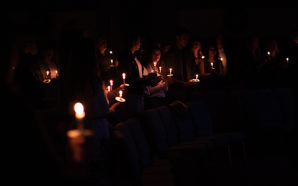Social media has given a big boost to Catholic traditionalism. What once was fringe has become almost mainstream, at least on the internet. When shared online, the teachings of the Catholic Church as set forth authentically by Pope Francis, his predecessors, and the Second Vatican Ecumenical Council are often met with contempt and derision by self-described “orthodox,” “traditional,” and “faithful” Catholics. To support their dissent, they often adduce proof-texts of older magisterial documents that they think contradict more recent magisterial teachings. At the heart of this conflict are apparent contradictions between past and present. So, if there seems to be a contradiction, which is to be preferred, the old or the new?
For traditionalists, the answer is of course the older documents. In an essay from 2001 called “Operative Points of View: A Scholar Examines the Root Cause of Present Tensions within the Ranks of Faithful Catholics,” published in the traditionalist magazine Christian Order, (it also appeared in a slightly different form in Latin Mass magazine), theologian Fr. Chad Ripperger laid out the basic guiding philosophy of the traditionalist position with respect to magisterial teaching. Although much of his article is fatuous, it does lay out their theory clearly and accurately. Because it continues to be cited today, and its approach to the teachings of recent popes and the Second Vatican Council has been adopted by many leading critics of Pope Francis, it deserves a (belated) rebuttal.
First of all, the magisterial statements Ripperger discusses are those that do not directly treat dogmas of the faith. They are, therefore, in Ripperger’s words, “non-infallible.” This language of “non-infallible” is problematic because it downplays the significance of such teachings. A teaching need not be defined infallibly to be true. Many Catholics on the internet dismiss “non-infallible” teachings as if they were worthless. This is often due to a fundamentalist mindset that puts all stock in “absolute truth.” If it’s not “infallible,” they reason, it’s not “absolute.” This is wrong, because truth is truth, and what matters is whether a teaching is true. It is, therefore, necessary to state the matter of “non-infallible” teachings with theological accuracy.
Within Catholicism, there is a “hierarchy of truths” (Unitatis Redintegratio 2). We can imagine them arranged in a pyramid. At the bottom of this hierarchy—on the bottom, because it’s the foundation and fundament—are the dogmas of the faith, as set forth in the Church’s Creeds. Immediately above that are the later dogmas that are not found in the ancient Creeds, such as the Immaculate Conception and papal infallibility. Up an additional level are doctrines that connect to these dogmas, but which, though proposed by the magisterium, have never been defined as dogmas. A number of details of theology would fall into this camp (for example, the distinction between the presbyterate and the episcopate), which we need not go into here. Here we may also include the Church’s social doctrines, which were scarcely elaborated before the Church had to confront the grave social problems of the late 19th, 20th, and 21st Centuries (e.g., labour and capital, poverty, nuclear weapons, the environment). At the higher levels of the pyramid, some of the bricks can be re-arranged or even repaired. New bricks can also be added at the top.
According to Fr. Ripperger and traditionalists generally, any magisterial statements that do not define dogmas (and there have been none since Munificentissimus Deus defined the Assumption of Mary in 1950) may be questioned if they seem to contradict earlier statements. In such cases, traditionalists will judge the recent statement against the older and (without any exceptions that I’ve ever seen) will always choose the older teaching. In practice, this is not a matter of a rare doubt, but a blanket ideology that de facto wipes away anything new or different proposed by the Magisterium since Cardinal Angelo Roncalli was elected to the papacy as John XXIII in 1958. When seen through a political lens, it can be quickly grasped that this is a Catholic version of nostalgia for the post-World War II “golden age.”
Nevertheless, Fr. Ripperger claims that traditionalists have only “some reservations about some aspects of current magisterial teaching.” Perhaps this is a kind of Ivory Tower idealism, or the naiveité of the early 2000’s. In any case, he says one can disagree with recent teachings on the basis of Scripture and dogma. There is truth in this assertion: traditionalist theologians, like theologians of all schools, can and do make rational arguments for their opinions based on Scripture and Tradition. But he claims that the “neo-conservatives” (in the context of the essay, Pope John Paul II and his defenders) make bald appeals to recent magisterial documents alone, without reference to Sacred Scripture or the Tradition. And since he can’t resist giving labels to everything, Ripperger names this a form of “positivism” which he has dubbed “magisterialism.”
This portrait of “neo-conservatives” is a straw man. Theologians supportive of Vatican II and Francis, like all theologians, defend, propose, and explain on the basis of Scripture and Tradition. Indeed, the fundamental method of the architects of Vatican II was “ressourcement,” which means going back to the “sources” of theology: Scripture and the Fathers and Doctors of the Church. At Vatican II, many ideas were presented and defended successfully from the sources, and in many cases they did contradict the theses of the neo-scholastics who then dominated the Roman Curia. This ressourcement resulted in the documents of Vatican II, and this is why the bishops and theologians did not feel any compunction at contradicting some of the prevailing notions of the pre-conciliar era—because the teachings of the Council were grounded in Scripture and the teachings of the Church Fathers. Although this scandalised the conservative minority, it was not a scandal, it was an exercise of the highest level of magisterial authority: an Ecumenical Council with and under the pope.
Take, for example, Pope Benedict XVI’s defence of religious liberty. Although Ripperger complains in his essay that the recent Magisterium often ignores tradition and leaves Catholics to wonder what’s going on, Benedict at the beginning of his papacy openly addressed the complaints of the “discontinuity” that was allegedly created by Vatican II on the issue that defined the Lefebvrist schism: religious liberty. Despite the acknowledged discontinuity, Benedict explained that a “continuity of principles” remained. This can exist alongside the discontinuity since they are “at different levels.” This balance of continuity and discontinuity at different levels is “the very nature of true reform” (a nod, I think, to Yves Congar’s 1953 Vraie et Fausse Réforme dans l’Eglise).
I will dub this the “Benedict principle” or “Newmanism,” after St. John Henry Newman. Pope Francis invoked this principle in his 2017 speech about changing the Catechism on the death penalty. He explains that this is the development of doctrine mentioned in Dei Verbum 8 and by the Church Father St. Vincent of Lérins. The popes have tried to explain changes in Church teaching; it’s just that some do not accept their explanations. Ripperger clearly rejects the Benedict principle. He labels it “Hegelianism,” in which “thesis” and “antithesis” are overcome in “synthesis.” For example, in Ripperger’s mind, when the Council addressed the matter of religious liberty, the thesis was the traditional Catholic claim that “error has no rights.” The antithesis was the claim of Enlightenment thinkers that religious truth was relative and objectively unknowable. Ripperger would say that the synthesis, then, is the idea that, once separated from relativism, the right to religious freedom could be happily embraced and promoted by the Church. All this traditionalists reject, because they believe old thesis was absolutely correct and needed neither antithesis nor synthesis.
Far from appealing to his own authority as pope, Benedict explained that the basis for the new teaching of religious liberty was “the deepest patrimony of the Church.”
The Second Vatican Council, recognising and making its own an essential principle of the modern State with the Decree on Religious Freedom, has recovered the deepest patrimony of the Church. By so doing she can be conscious of being in full harmony with the teaching of Jesus himself (cf. Mt 22: 21), as well as with the Church of the martyrs of all time. The ancient Church naturally prayed for the emperors and political leaders out of duty (cf. I Tm 2: 2); but while she prayed for the emperors, she refused to worship them and thereby clearly rejected the religion of the State.
The martyrs of the early Church died for their faith in that God who was revealed in Jesus Christ, and for this very reason they also died for freedom of conscience and the freedom to profess one’s own faith – a profession that no State can impose but which, instead, can only be claimed with God’s grace in freedom of conscience.
The Second Vatican Council teaches that the foundation of religious freedom is nothing less than Scripture and Tradition. It is not, as Ripperger posits, the product of a Hegelian synthesis. As I said before, all theologians use Scripture and Tradition, and it’s disingenuous for Ripperger to claim that only traditionalists do. Additionally, they themselves often quote older magisterial documents as authoritative; why should newer ones not also be quoted? If the older documents have some kind of divinely-authorised force, then so do the newer ones, since there is only one Catholic Church. If the older popes and Councils had authority, so must the newer ones, since they rest on the same foundation.
Ripperger does not take full account of the third leg of the stool: the Magisterium. “It is clear that in the supremely wise arrangement of God, Sacred Tradition, Sacred Scripture, and the magisterium of the Church are so connected and associated that one of them cannot stand without the others” (Dei Verbum 10, Flannery trans.). Admittedly, he does better than some—such as Archbishop Vigano, who wholly reject Pope Francis and even Vatican II—in that he acknowledges the legitimacy of the current Magisterium. Nevertheless, he treats the Magisterium in an abstract, ideal way, as if it was two competing slates of propositions. But the Magisterium is alive. It is not a list of documents; by definition, the Magisterium is the pope and bishops in communion with him. “Together with its head, the Supreme Pontiff, and never apart from him, [the order of bishops] is the subject of supreme authority over the universal Church” (Lumen Gentium 22). In theological disputes, Catholics acknowledge that the Roman Magisterium has the right to intervene to settle the debate, either definitively by a dogmatic definition, or tentatively (but still authoritatively) through “non-infallible” teaching documents, such as papal encyclicals. The latter exercise of authority is called “ordinary Magisterium,” and Catholics are expected to assent to these decisions:
This religious docility of the will and intellect must be extended, in a special way, to the authentic teaching authority of the Roman Pontiff, even when he does not speak ex cathedra, in such wise, indeed, that his supreme teaching authority be acknowledged with respect, and that one sincerely adhere to decisions made by him conformably with his manifest mind and intention, which is made known principally either by the character of the documents in question, or by the frequency with which a certain doctrine is proposed, or by the manner in which the doctrine is formulated. (Lumen Gentium 25)
Like most Catholic theologians, I take issue with the traditionalist understanding of the nature of Tradition and Magisterium. So this is a theological debate! But, the popes themselves have intervened in this debate about Tradition and Magisterium and have clarified how and why the development of doctrine works. Francis and Benedict, in particular, have made it clear in speeches and writings, as I’ve shown, that older magisterial declarations can rightly be revised by the same Magisterium, provided the fundamental principles and beliefs of the Catholic Church remain intact. This idea itself is part of Catholic teaching. As such, Catholics are expected to affirm that doctrine develops and that the living Magisterium has the authority to revise earlier positions, as happened at Vatican II on several important issues. In giving this assent, we “neo-conservatives” show more Catholic devotion to the Roman Church than the traditionalists do. It’s absurd for them to claim to be more Catholic (let alone the only “real” Catholics).
Honestly, as a theologian who researches theology and Church history and who has opinions, I don’t mind when well-informed traditionalists, in good conscience and with real (not feigned or merely formal) respect for the pope’s authority, question decisions or teachings by appealing cogently to Scripture and Tradition. We have seen Pope Francis promote this kind of healthy criticism. Early in his papacy, he wrote to a traditionalist who had criticised him and later taken ill, to tell him that it’s important that respectful criticism be made. In 2019 he spoke about “fair criticism” of the pope:
Fair criticism – “I think thus and so” – is open to a response. This is constructive. Regarding the case of the Pope: “I don’t like this aspect of the Pope, I criticise him, I speak about him, I write an article and ask him to respond,” this is fair. To criticise without wanting to hear a response and without getting into dialogue is not to have the good of the Church at heart, it is chasing after a fixed idea, to change the Pope or to create a schism. This is clear: a fair criticism is always well received, at least by me.
There is room for theological diversity of opinion in the Church, even among bishops, as Francis has insisted. To his credit, Ripperger says the same thing, with the legitimate qualification that all Catholics, whether liberal or conservative, must believe the Creed and dogmas of the faith.[1] That being said, those who dissent from teachings, whether recent or not, need to own and recognise their dissent, and not champion themselves as “orthodox.”
The way that traditionalists mobilise online en masse to attack the pope, however, is completely contrary to the Church’s understanding of the Magisterium and is inexcusable. Whatever difficulties they may have understanding or accepting the more recent teachings of the Church, their dissent does not justify rebellion. The sort of behaviour we see online from extremists like Archbishop Viganò, who relentlessly attack the pope and espouse bizarre conspiracy theories, is beyond the pale. With such people, it is impossible to dialogue. Some of them are even priests and bishops. The situation has gotten completely out of hand. Many Catholics have been misled into erroneous ideas about the faith by these self-anointed guardians of “orthodoxy,” who are in reality undermining the Church and its teachings. In my opinion, putting a stop to this madness is necessary for the pastoral good of the Church.
Dr Adam Rasmussen is a Professorial Lecturer in the Department of Theology at Georgetown University. He has a Ph.D. in Theology and Religious Studies from The Catholic University of America, specialising in historical theology and early Christianity. His research focuses on St. Basil, Origen, and the interface between theology and science in their writings. His current research focuses on Basil and the human body, physiology, and medicine. He blogs at https://chrysologus.blogspot.com/
With thanks to Where Peter Is and Dr Adam Rasmussen, where this article originally appeared.
[1] I would add here that there are sometimes disagreements about what those dogmas mean, and such disagreements are also legitimate subjects for debate. Indeed, it was in respect to the development of the key christological dogmas in the Creeds that Newman wrote his essay.








